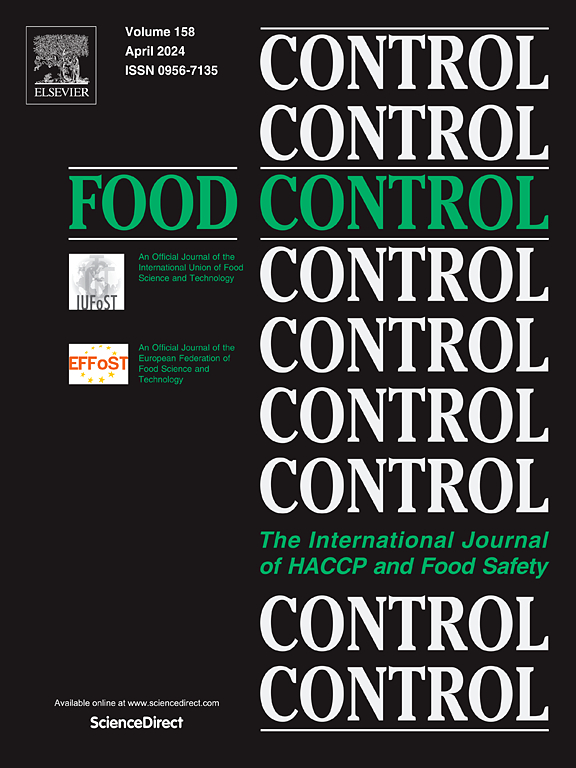Bioautographic method for detecting natural preservatives against Mycobacterium in edible essential oils
IF 5.6
1区 农林科学
Q1 FOOD SCIENCE & TECHNOLOGY
引用次数: 0
Abstract
The interest in essential oils and their use in antimicrobial food preservation has increased in recent years, driven by a growing consumer preference for natural alternatives over synthetic preservatives. Since essential oils are compound mixtures, their study can benefit from effective, simple, and low-cost tools that enable the linking of an observed biological effect with their actual bioactive constituents. In this study, thin-layer chromatography was coupled with an agar-overlay Mycobacterium assay to detect antimycobacterial compounds in essential oils. The optimization of key parameters, including the culture optical density, addition of tyloxapol, incubation time, and final gel volume on the chromatographic plate was carried out through factorial analysis. The results demonstrated acceptable linearity within a range of 0.3–5.0 μg for isoniazid, with a coefficient of determination (r2) = 0.96 and a limit of detection equal to 0.20 μg. A set of 36 essential oils was studied with the developed bioautography. Two active essential oils, Origanum vulgare L. and Allium sativum L., were selected for further analysis by gas chromatography coupled to mass analysis (BioMSId strategy) identifying the compounds responsible for the observed inhibition. The 1,2-diallyl disulfide and 5-isopropyl-2-methylphenol were identified in A. sativum and O. vulgare respectively. The current assay can be applied to the study of mixtures with varying levels of complexity, facilitating dereplication.
求助全文
约1分钟内获得全文
求助全文
来源期刊

Food Control
工程技术-食品科技
CiteScore
12.20
自引率
6.70%
发文量
758
审稿时长
33 days
期刊介绍:
Food Control is an international journal that provides essential information for those involved in food safety and process control.
Food Control covers the below areas that relate to food process control or to food safety of human foods:
• Microbial food safety and antimicrobial systems
• Mycotoxins
• Hazard analysis, HACCP and food safety objectives
• Risk assessment, including microbial and chemical hazards
• Quality assurance
• Good manufacturing practices
• Food process systems design and control
• Food Packaging technology and materials in contact with foods
• Rapid methods of analysis and detection, including sensor technology
• Codes of practice, legislation and international harmonization
• Consumer issues
• Education, training and research needs.
The scope of Food Control is comprehensive and includes original research papers, authoritative reviews, short communications, comment articles that report on new developments in food control, and position papers.
 求助内容:
求助内容: 应助结果提醒方式:
应助结果提醒方式:


